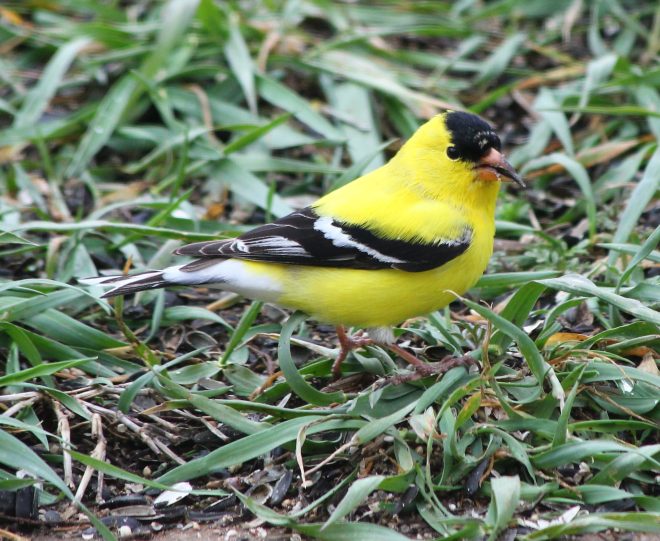December 20, 4:00 AM. Thursday. The sun still two hours from breaching the horizon, I’m up and pulling myself out from sleep-warmed sheets and into the pre-dawn chill. My wife, still snuggled safely under the covers, breathes softly, oblivious to the goings-on around her. She won’t be joining this chase.
I dress quietly in the dark and head to the kitchen for a quick breakfast, waiting for my son to wake and making final preparations for the day’s adventure: a northern sprint to a little park in Portland, Maine, wherein lies the rarest bird we’ll ever see.
Aidan emerges from his room, groggy but excited. Though he’s on winter break and fiercely protective of his sleep, this trip was his idea. He is first and foremost a birder, and earliness of the hour be damned, he’s champing at the bit to go. It’s three-and-a-half hours to our destination, and the winter light is short; there will be time to rest tomorrow. We gather the last few items—binoculars, cameras, gloves, provisions for the road (even birders as obsessed as we are need to eat)—and we’re off, leaving my wife sound asleep and the cats silently questioning our sanity. Just one thing left to do: pick up Keith.

Gyrfalcon © Keith Carver
As of this writing, Keith Carver and I have known each other for exactly six years and 30 days—and I can almost pinpoint the hour. This is due not to any special powers of recollection on my part, nor because I have the date and time entered into a journal. I know this because on January 2, 2013, Keith and I met in Hadley, Massachusetts while watching a Gyrfalcon. In our area, this happens about once every 20 years, so it’s an event of some note—and a very auspicious start to a friendship that’s since included Pink-footed and Barnacle Geese, Bohemian Waxwings, and one very obliging Fork-tailed Flycatcher. Keith’s a great friend and wonderful birding companion, and is always up for a chase: When I told him our plan and invited him to join us, he didn’t hesitate. He also knows Portland well, and could guide us to the very spot where, with a little luck, the bird would be waiting.
When we got to Keith’s house, he was ready for us. A quick turnaround—exchanging greetings, stowing gear—and we were back on the road, drawn automatically and inexorably towards our own Magnetic North, driven by hope, passion, and the thrill of the chase.
Three hours later, we pulled off the interstate and into Portland, our destination just to the right of the exit ramp. One slow merge and three turns later and we’d arrived: Deering Oaks Park. And there, at the last turn, was the bird—perched in a tree at the junction of Park and Deering Avenues, in the park’s southwest corner, right where it was supposed to be. We found a spot just down the road, walked back to the tree, and looked up.
There it was. And it was beautiful. At the end of the easiest chase we’d ever had was the rarest bird we’d ever seen. For a moment, none of us spoke—we just stared, letting our minds fully grasp the reality of the situation in which we now found ourselves. By all rights, the bird shouldn’t have been there—and yet it was. Standing on a corner in downtown Portland, Maine, we were looking at a Great Black Hawk.
Great Black Hawks are large raptors (similar in size to Red-tailed Hawks) native to Central and South America; until this bird, there’d never been a confirmed wild Great Black Hawk north of Mexico. Then, on April 24, 2018, a birder found and photographed a large raptor on Texas’s South Padre Island; review of the photos and subsequent observations confirmed the bird as a juvenile Great Black Hawk. But the bird vanished later that day, and despite dedicated searching was never seen again.
Fast forward to August 6. Twenty-four miles south of Portland, a birder again photographs an unusual hawk, this one soaring over the seaside town of Biddeford Pool. The photo hits the Internet and eventually lands at a FaceBook group called What’s This Bird?, where it’s identified as a juvenile Great Black Hawk. Three days later, this bird, too, disappears. On October 29, the bird appears again, this time along Portland’s East Promenade—but vanishes like smoke the next day.
Finally, on Thursday, November 29, the hawk discovers Deering Oaks Park and, without fanfare or fuss, settles in. Since that August 6 report, birders up and down the state have been on the lookout for this bird; word gets out almost from the minute it touches down, and birders begin pouring in behind it—the first trickles of water ahead of the flood. Someone manages to capture a photo of the underside of its wing, showing distinctive patterning. Comparison to underwing photos of the Texas bird come up positive: incredibly, this is the same bird that materialized over South Padre Island eight months before—and nearly 2000 miles away.
 News of the hawk’s arrival in Portland spreads beyond Maine’s borders like wildfire, drawing people from across the country—Massachusetts, New York, Maryland, Ohio, Pennsylvania, California. It spends the next several weeks in the park, feasting on a near-endless supply of squirrels, rats, and pigeons, and tussling with the resident Red-tails. Thousands of birders come to this unlikely spot to bear witness to an event the likes of which, in a lifetime of birding, may happen once.
News of the hawk’s arrival in Portland spreads beyond Maine’s borders like wildfire, drawing people from across the country—Massachusetts, New York, Maryland, Ohio, Pennsylvania, California. It spends the next several weeks in the park, feasting on a near-endless supply of squirrels, rats, and pigeons, and tussling with the resident Red-tails. Thousands of birders come to this unlikely spot to bear witness to an event the likes of which, in a lifetime of birding, may happen once.
And thus, on the morning of December 20, did we find ourselves in the hawk’s company—the faithful, as it were, undertaking a holy pilgrimage to offer our respects and simply be in the presence of this glorious bird. We spent nearly three hours there, among a small crowd of kindred spirits celebrating the occasion and our collective good fortune to be a part of it, each of us subsuming a piece of history and in turn being subsumed by it, awed by the mysterious spectacle. Questions fell like rain. How had this hawk gotten here? How long would it stay? How was it surviving, and how long would it last? The bird, naturally, was silent to our queries, and simply went about the business of being a bird—in this case, roosting, hunting the copious and corpulent urban squirrels, and for the most part ignoring us. And that was the wonder of it. In an entirely alien environment, in the midst of its celebrity, this hawk found a way to survive, and did so with grace and relative ease. It appeared to all the world as if it belonged there—despite being 3000 miles from the familiar, from home.
And then, as difficult as it was to break away, it was time to begin our southward trip home. We parted ways with the group—these former strangers to whom we were now, through this encounter, permanently connected—silently thanked the hawk, and wished it well. For now, at least, it was healthy and it was safe. But its future, like its past, was uncertain.
The Great Black Hawk continued to delight new and repeat visitors to the park for some time. Prey was bountiful, and thus far the weather had been mild, sparing the bird the full fury of December in Maine. In the back of everyone’s mind, though, was the “What if?”. This was, after all, a bird of the tropics, not adapted to the brutal cold and punishing reality of a true New England winter. If conditions changed, if the mercury plummeted and snow and ice took hold of Deering Oaks Park, would the hawk survive?
Like everyone, I hoped for the best, but was subconsciously steeling myself against an outcome I hadn’t the courage to voice. Nature plays by her own rules though, with no regard for our feelings or desires: On January 20, winter’s hammer struck on the winds of a bitter storm that would ultimately claim the hawk’s life.
That was the scenario everyone had been watching for. Everyone knew what it might mean, and people were ready for it. The morning after the storm, someone went looking for the hawk and found it lying on the ground, unable to stand, and virtually unresponsive… yet somehow alive. That same morning, Terra Fletcher, a recent transplant to the state who we’d met on our visit and who had experience with raptors, happened to be in the park as well. She took the bird home, got it warm and safe, and then made contact with Avian Haven, a dedicated bird rehab facility in Freedom, Maine, who arranged transport for the hawk. Road conditions could hardly have been worse: the usually 90-minute trip was a harrowing four-hour ordeal, but the hawk’s condition seemed to improve along the way. When it arrived at Avian Haven, the bird was alert and active. After emergency care for frostbite to both feet and general debilitation, the staff at Avian Haven settled the Great Black Hawk into intensive care for the night.
The next morning, the hawk was standing and very hungry. A full exam revealed that the bird was stable and in good overall body condition, but the frostbite was a bit worrying. Though it didn’t appear excessive at that point, frostbite is notoriously insidious. It would be at least a few days before they’d know the full extent of the damage. In the meantime, the hawk was still eating ravenously and seemed to be gaining strength.
Appearances can be deceiving, though. Wild animals hide their injuries well; by the time something is obviously wrong, it’s often too late. Though the hawk’s appetite continued unabated and it grew feistier, the full effects of frostbite began to show: it had progressed from the bird’s feet to its lower legs. By January 29, the situation looked grim: the vets at Avian Haven were faced with the probability that the bird would lose at least two toes from each foot to frostbite. In all likelihood, it would be worse.
The next morning, the hawk’s appetite fell precipitously and it was unable to stand. Diagnostic tests showed no circulation in the feet or lower legs; when the vets removed the bandages, both feet were discolored and beginning to decompose. Avian Haven had done all they could; despite heroic efforts to save the hawk, the damage was too great. This wayward stranger’s journey had reached its end.
 I, like all who’d come to know this bird, was heartbroken. It all seemed so futile—all the effort, and for what? If it was just going to die anyway, what was the point? Why? The answer, of course, is simple: because. Because to do nothing, to let the bird suffer, cold and alone, would have been morally wrong. In its need for protection, for kindness, and for care, the hawk was no different from any of us. Though the outcome was ultimately the same, in its last days, the hawk knew peace, safety, and comfort. It was shown great compassion, and in its final moments it was attended by people whose hearts had grown to encompass this incredible, bird. On some level, I’m certain it understood that people cared for it. That it was loved.
I, like all who’d come to know this bird, was heartbroken. It all seemed so futile—all the effort, and for what? If it was just going to die anyway, what was the point? Why? The answer, of course, is simple: because. Because to do nothing, to let the bird suffer, cold and alone, would have been morally wrong. In its need for protection, for kindness, and for care, the hawk was no different from any of us. Though the outcome was ultimately the same, in its last days, the hawk knew peace, safety, and comfort. It was shown great compassion, and in its final moments it was attended by people whose hearts had grown to encompass this incredible, bird. On some level, I’m certain it understood that people cared for it. That it was loved.
During its life, the Great Black Hawk brought joy to all who spent time with it. People who had never watched a bird before became captivated by this beautiful hawk and the story of its epic journey; many found themselves caring. For some, it awakened a sense of awe and wonder in the face of Nature, and a desire to protect Her. And there were those of us who fell in love.
Chasing birds is about the allure of the possible, the embrace of wonder. But it’s also about accepting the beauty and fragility of life, and the reality of its inevitable and sometimes tragic end. The idea of a tropical raptor finding safe haven in northern New England was ludicrous, until the Great Black Hawk found its way to a city park in Portland, Maine and changed everything. Should this have been possible? No, not really. Yet somehow, there it was. And though this hawk met its fate too early, while it lived it was magnificent. Power, beauty, grace, dignity, all given exquisite form in feather, muscle, and bone—a winged embodiment of living fire, defying all expectations of what should be, and by its presence challenging us to rethink what we know. This is how I choose to remember it.
Birds don’t exist for our benefit, but we benefit from their existence—ephemeral though it may be. Had I not spent time with the Great Black Hawk, would I have been spared the pain of its death? Of course. But I would have been robbed of something much greater: the chance to witness something spectacular and to know, even a little, the magical, the wondrous, and the beautiful life it was.
By their nature, birds are creatures of mystery, capable of things the likes of which we humans can only dream. Spend time with them—any of them—and I dare you not to become captivated, not to fall in love. But spend time with something this rare, and I dare you not to reevaluate your knowledge of what can be, not to question your idea of the possible. And I dare you to remain unchanged.
This, this is what the Great Black Hawk was. For me, the experience was worth a broken heart.
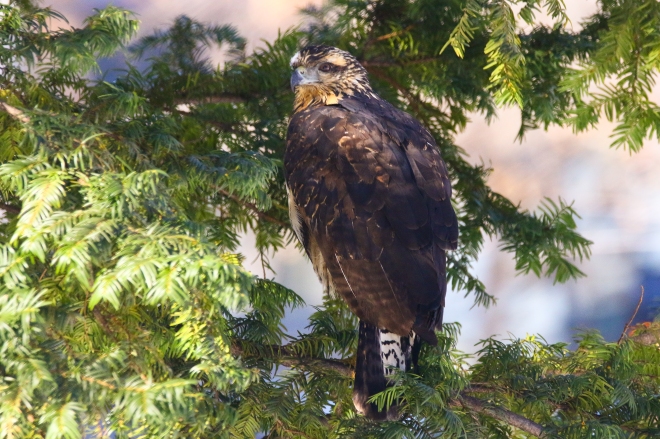
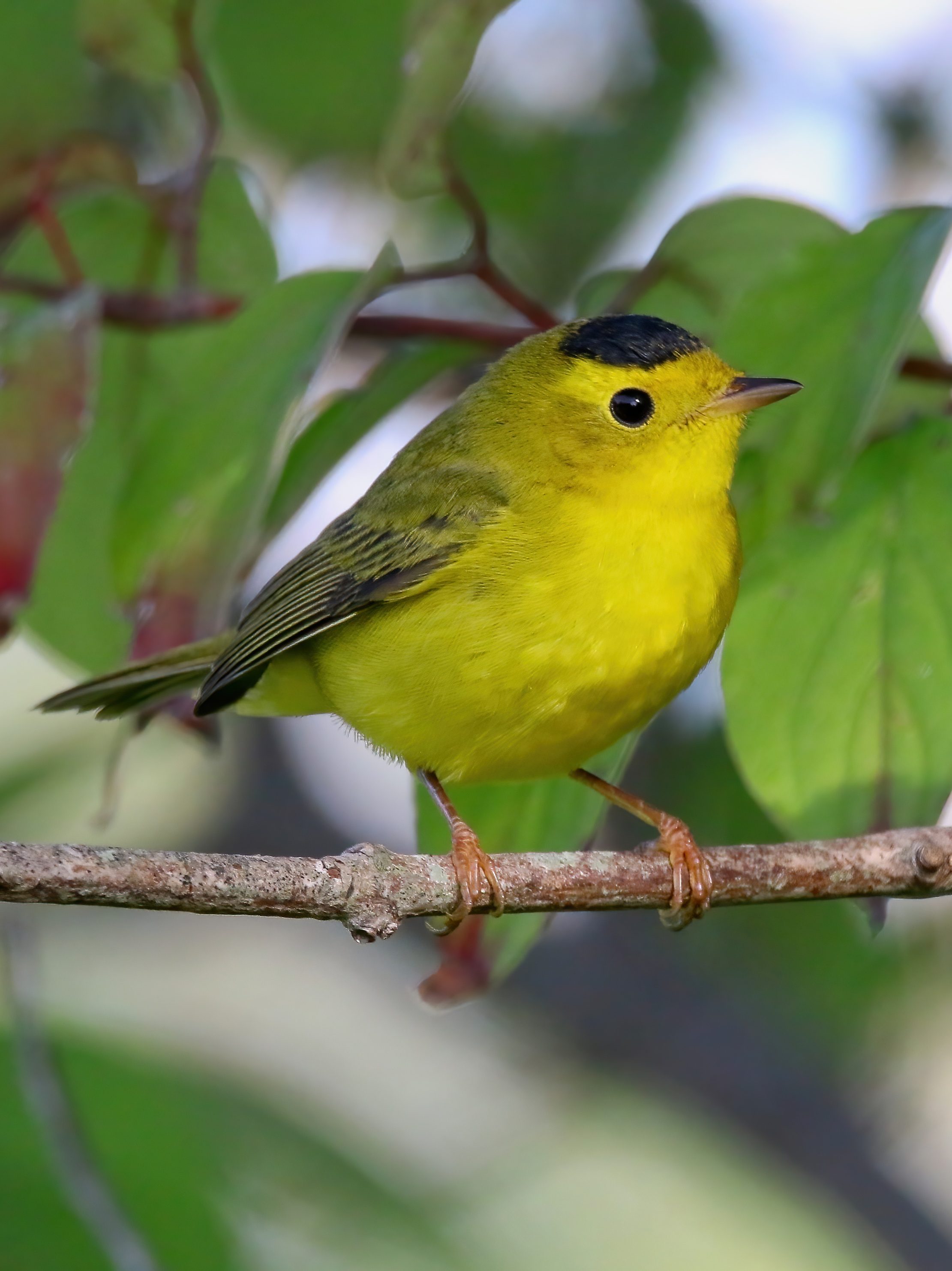


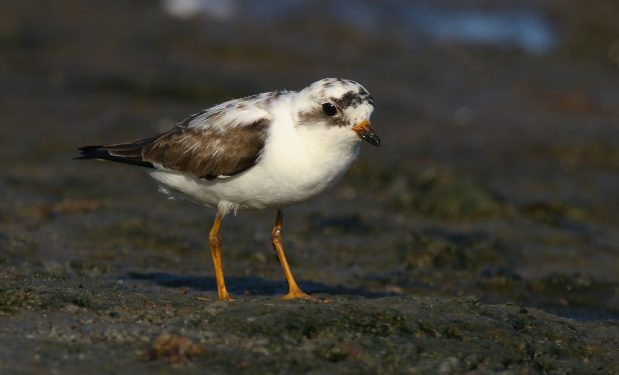





 News of the hawk’s arrival in Portland spreads beyond Maine’s borders like wildfire, drawing people from across the country—Massachusetts, New York, Maryland, Ohio, Pennsylvania, California. It spends the next several weeks in the park, feasting on a near-endless supply of squirrels, rats, and pigeons, and tussling with the resident Red-tails. Thousands of birders come to this unlikely spot to bear witness to an event the likes of which, in a lifetime of birding, may happen once.
News of the hawk’s arrival in Portland spreads beyond Maine’s borders like wildfire, drawing people from across the country—Massachusetts, New York, Maryland, Ohio, Pennsylvania, California. It spends the next several weeks in the park, feasting on a near-endless supply of squirrels, rats, and pigeons, and tussling with the resident Red-tails. Thousands of birders come to this unlikely spot to bear witness to an event the likes of which, in a lifetime of birding, may happen once. I, like all who’d come to know this bird, was heartbroken. It all seemed so futile—all the effort, and for what? If it was just going to die anyway, what was the point? Why? The answer, of course, is simple: because. Because to do nothing, to let the bird suffer, cold and alone, would have been morally wrong. In its need for protection, for kindness, and for care, the hawk was no different from any of us. Though the outcome was ultimately the same, in its last days, the hawk knew peace, safety, and comfort. It was shown great compassion, and in its final moments it was attended by people whose hearts had grown to encompass this incredible, bird. On some level, I’m certain it understood that people cared for it. That it was loved.
I, like all who’d come to know this bird, was heartbroken. It all seemed so futile—all the effort, and for what? If it was just going to die anyway, what was the point? Why? The answer, of course, is simple: because. Because to do nothing, to let the bird suffer, cold and alone, would have been morally wrong. In its need for protection, for kindness, and for care, the hawk was no different from any of us. Though the outcome was ultimately the same, in its last days, the hawk knew peace, safety, and comfort. It was shown great compassion, and in its final moments it was attended by people whose hearts had grown to encompass this incredible, bird. On some level, I’m certain it understood that people cared for it. That it was loved.
 The end of 2018 brought a rather unusual visitor to our corner of Western Massachusetts—a belated Christmas present for the local birders in the form of a beautiful male Canvasback. The duck first appeared with little fanfare on an oxbow lake off the Connecticut River in Northampton and set to feeding, unaware of the excitement he was about to generate.
The end of 2018 brought a rather unusual visitor to our corner of Western Massachusetts—a belated Christmas present for the local birders in the form of a beautiful male Canvasback. The duck first appeared with little fanfare on an oxbow lake off the Connecticut River in Northampton and set to feeding, unaware of the excitement he was about to generate.

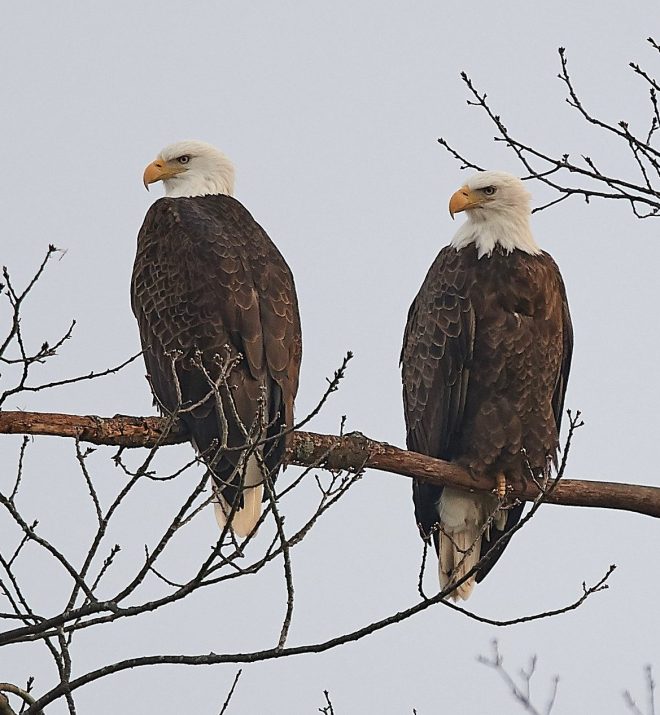

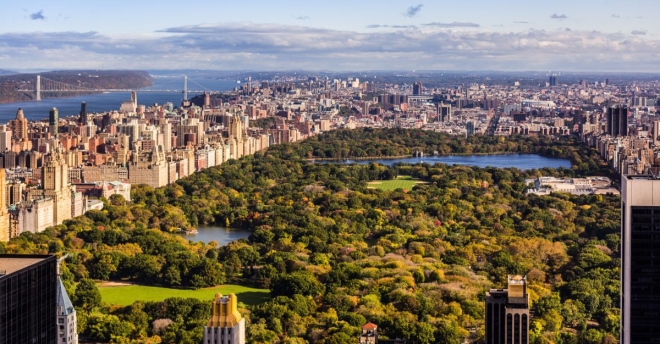
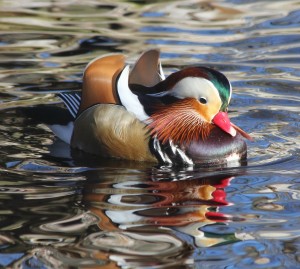



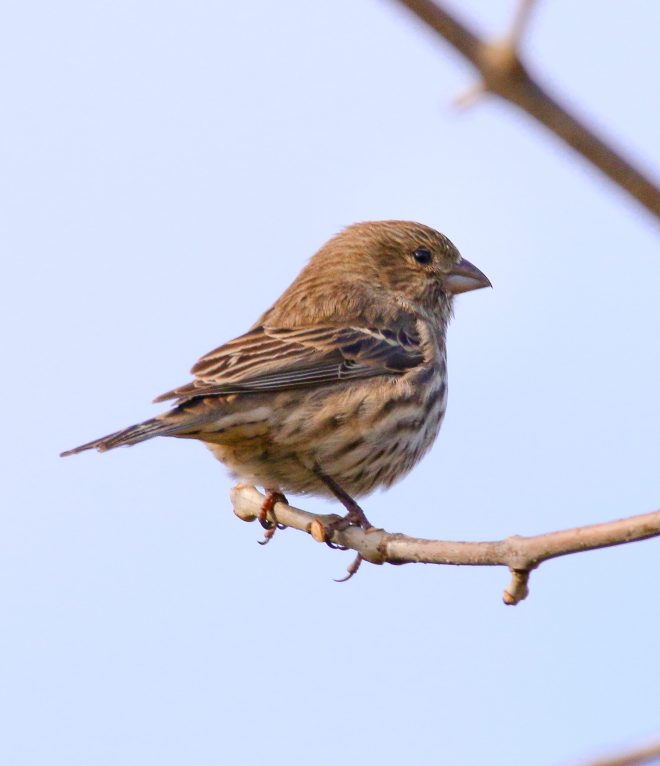 Sometimes prayers are answered. This morning, Judy drove the finch back home. The bird she released in our yard was feisty, energetic, and possessed of all the vitality that this disease had drained from her—the fire of life burning deep and strong within her feathered breast. She flew to the top of the tallest tree, and was immediately joined by another of her kin. The two finches sat in each other’s company, perhaps enjoying their reunion, and then she took flight again, descending into the yard. She landed in a nearby Ash and, head tilted in our direction, regarded us—we two who had helped her back to life. I looked into her eye, and the full force of connection hit me—a freight train carried on gossamer wings. Weeks before, I had reached out my hand and delivered her into the hands of another who would save her. And here she was, healthy, beautiful, and free.
Sometimes prayers are answered. This morning, Judy drove the finch back home. The bird she released in our yard was feisty, energetic, and possessed of all the vitality that this disease had drained from her—the fire of life burning deep and strong within her feathered breast. She flew to the top of the tallest tree, and was immediately joined by another of her kin. The two finches sat in each other’s company, perhaps enjoying their reunion, and then she took flight again, descending into the yard. She landed in a nearby Ash and, head tilted in our direction, regarded us—we two who had helped her back to life. I looked into her eye, and the full force of connection hit me—a freight train carried on gossamer wings. Weeks before, I had reached out my hand and delivered her into the hands of another who would save her. And here she was, healthy, beautiful, and free.

 But there is something you can do: go birding. It sounds simple, I know, even ridiculous, but hear me out. This weekend, November 4-5, is the fourth annual Wader Conservation World Watch (WCWW), and it’s a chance to help. Started by the UK-based conservation group Wader Quest, the WCWW is a two-day survey of the world’s shorebirds—citizen science on a global scale. Wader Quest’s mission is simple: Save the shorebirds. By educating people about the needs of shorebirds and the struggles they face, and raising funds to support conservation efforts across the globe, Wader Quest is helping to drive shorebird conservation worldwide. But they can’t do it alone.
But there is something you can do: go birding. It sounds simple, I know, even ridiculous, but hear me out. This weekend, November 4-5, is the fourth annual Wader Conservation World Watch (WCWW), and it’s a chance to help. Started by the UK-based conservation group Wader Quest, the WCWW is a two-day survey of the world’s shorebirds—citizen science on a global scale. Wader Quest’s mission is simple: Save the shorebirds. By educating people about the needs of shorebirds and the struggles they face, and raising funds to support conservation efforts across the globe, Wader Quest is helping to drive shorebird conservation worldwide. But they can’t do it alone.








